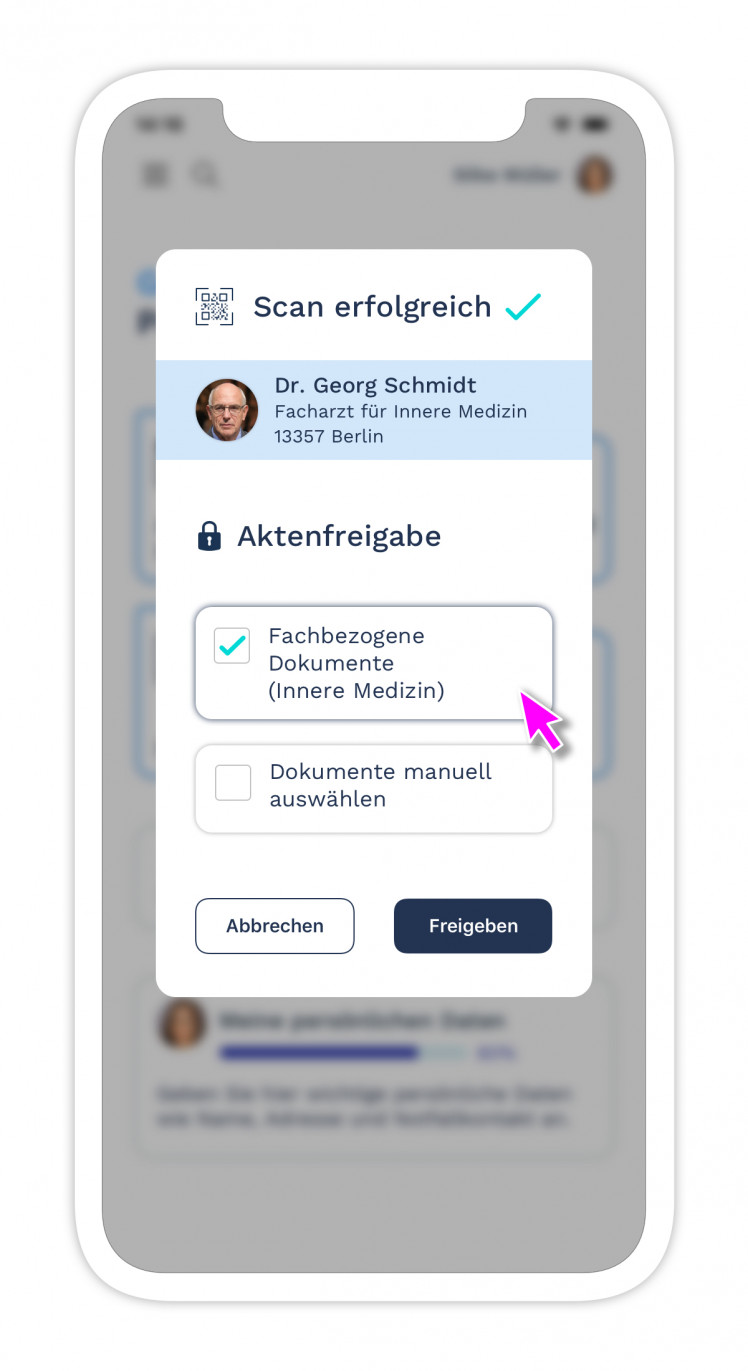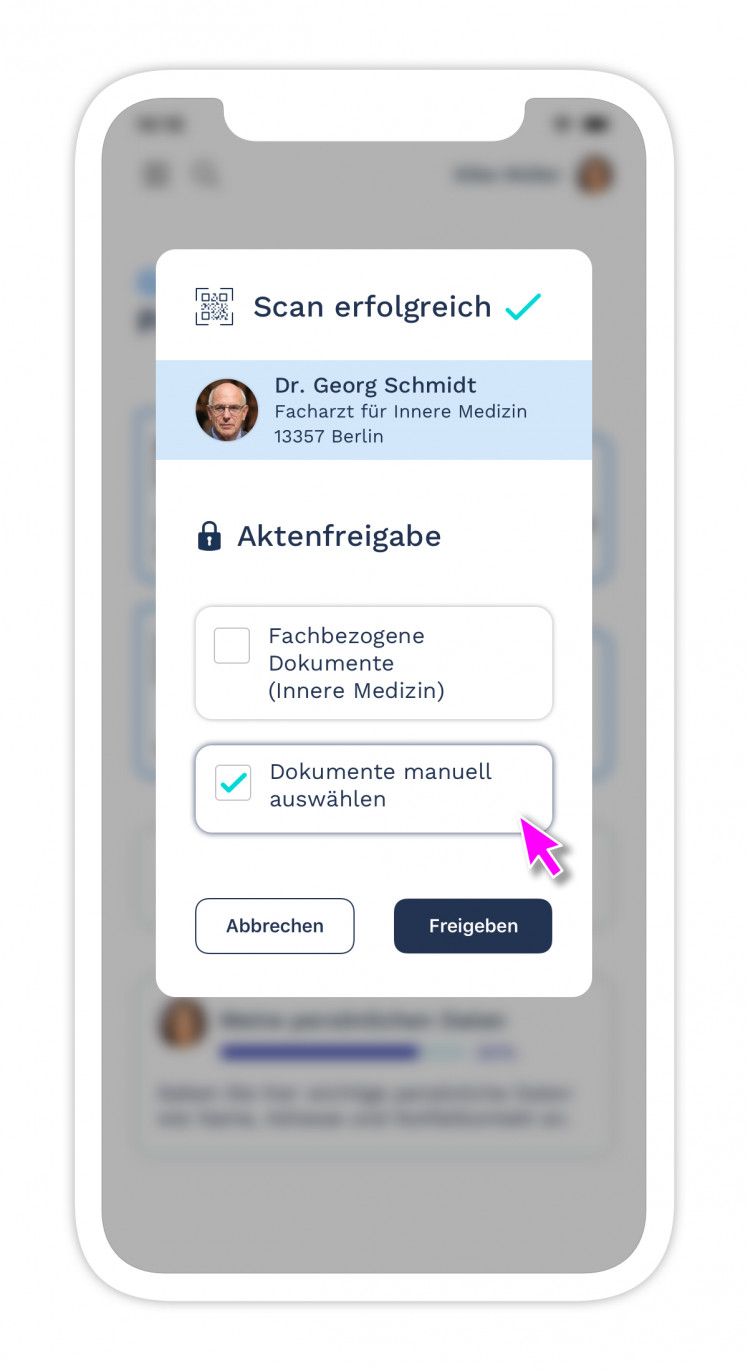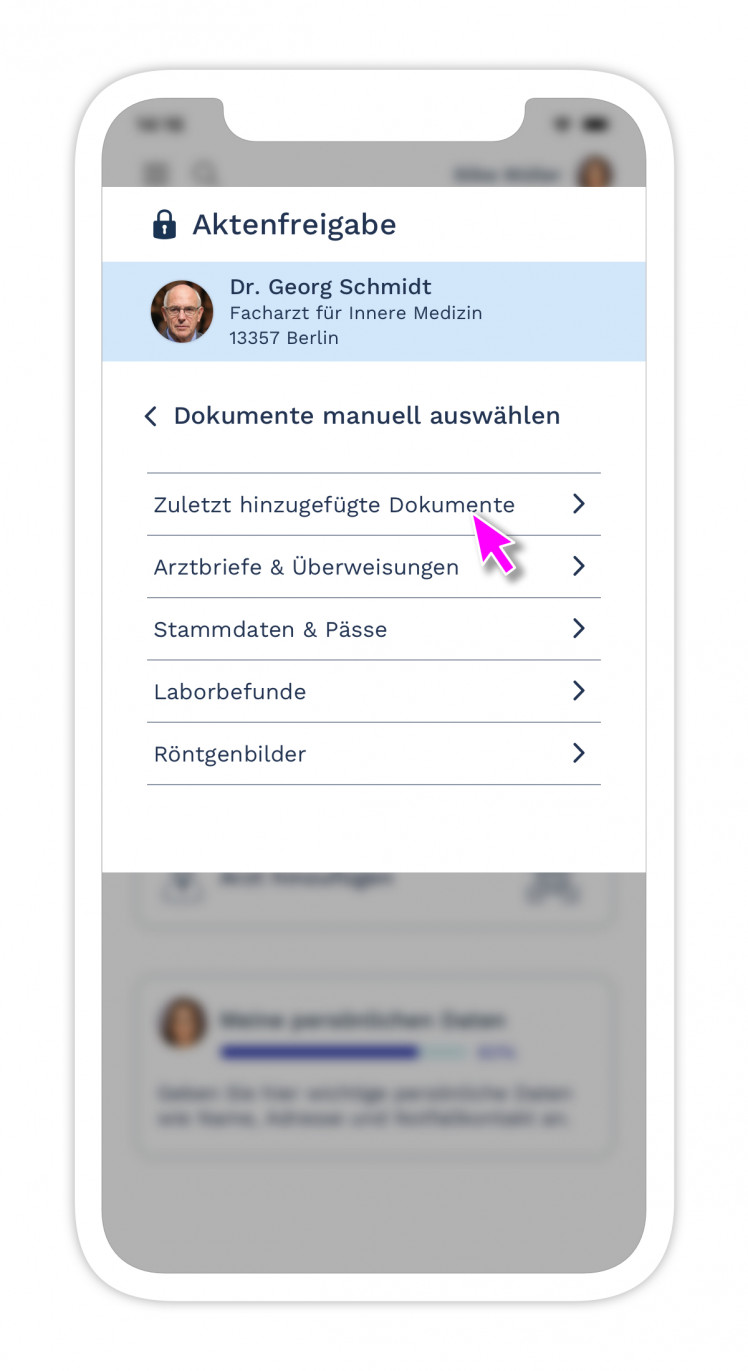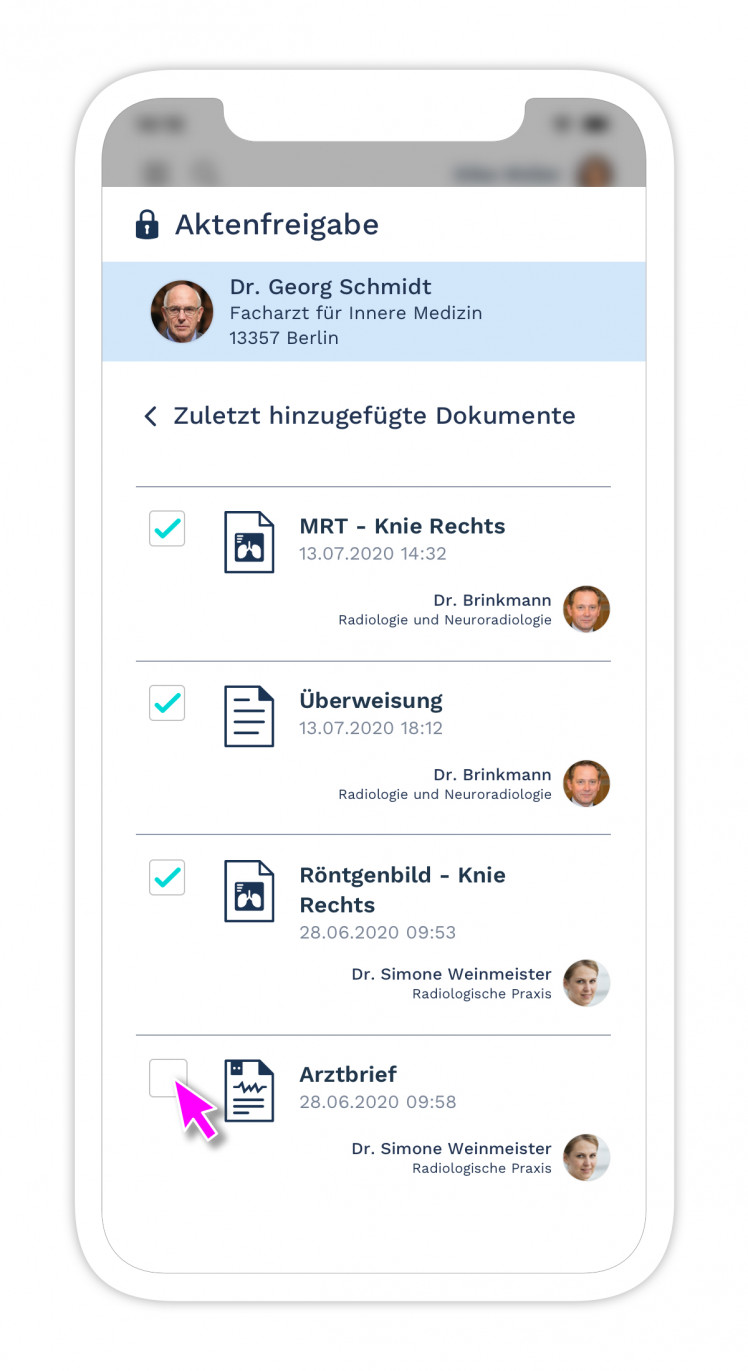The Decentralized Reset for Digital Health.
Just imagine: Every person in Europe has true ownership of their medical data – and can decide what to do with it at any point in time. Sounds utopian? We're making it come true. Using decentralized storage and blockchain.
ĐEHR is a decentralized infrastructure for Europe to document and exchange personal medical data.
We are creating a secure, trustworthy and interoperable foundation for the healthcare system, which all actors and systems can dock on to.

The ĐEHR infrastructure is designed to meet the needs of patients. That's why we have developed an app that shows how patients interact with their medical data.
How does ĐEHR work?
It's best to see for yourself. With a demo tailored just to you.
Get in touch.

During the first visit to a doctor's office, patients can declare their trust in the doctor by scanning a QR code. This gives the doctor access to their health record. They can revoke this at any time.
Data sovereignty where it truly belongs: with patients.
We believe all patients must be in control of their most intimate data. That is why ĐEHR focuses on the needs of patients.
With ĐEHR we decide for ourselves whom we trust, whom we grant access to our data and for what purpose, and who is allowed to make changes. At the same time, ĐEHR is the single point of truth regarding health data and any changes made to it.
Your family doctor has a new diagnosis? You will get notified immediately. She needs to take a look what a specialist has found? You as the patient get to decide whom to give access to which documents and why.
In the media
Our vision:
every person in Europe decides what happens to their own health data.
How that is possible? Using decentralized technologies.
Decentralized technologies form the basis of ĐEHR. More precisely: the combination of decentralized data storage (IPFS) and the blockchain (Ethereum). Why? Because decentralized technologies are inherently suited for handling sensitive health data: security, trust and interoperability are already built in.
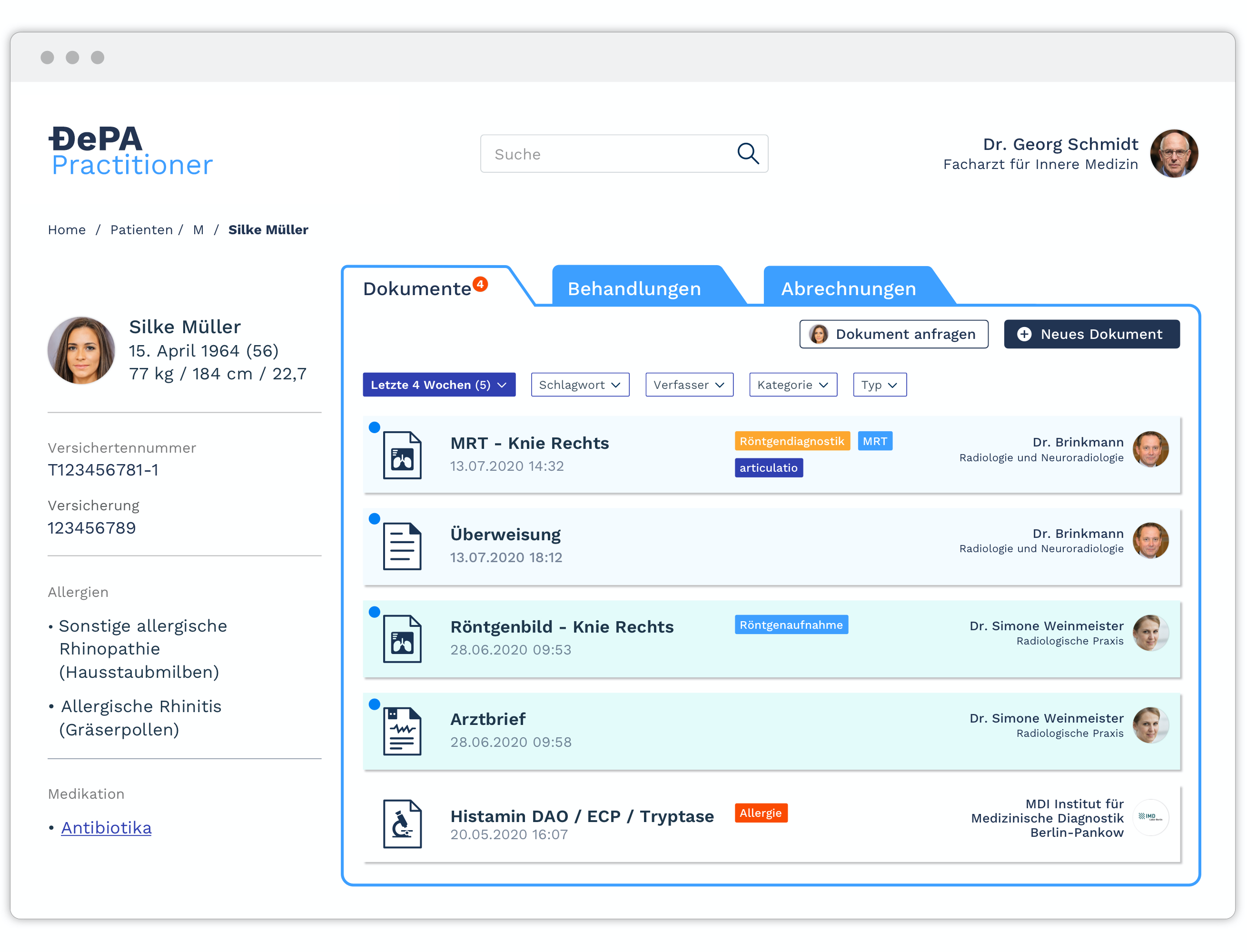
The practitioner app is for demonstration purposes only. It illustrates how patients and doctors interact. The ĐEHR infrastructure can be connected to existing solutions for medical practice management (PMS) or hospital information systems (HIS).
How do doctors and patients exchange information?
When a doctor wants to add a new or modified document to a patient's health record, she places the document on the ĐEHR network. The document is encrypted with the patient's public key and the doctor's private key, linking it to the patient's record. As a result, only this patient can view the information and share it with other actors.
What are decentralized data structures (Blockchain, IPFS)?
A blockchain is a continuously expandable list of transaction data, which are linked together by cryptographic methods. Transactions are grouped into blocks, each of them referring to its previous block. All information is distributed in decentralized networks. A peer-to-peer approach is usually used to distribute the data to all participating nodes.
IPFS stands for Inter-Planetary File System – and is thus probably the most ambitious abbreviation in the world. It is a peer-to-peer network for sharing data, i.e. a decentrally distributed file system. There is no central node or central database. Instead, data remains where it is created and is exchanged directly between participants.
Do I need my own blockchain wallet for the DePA?
In our current solution, before a patient can create their health record, they open a local wallet. Our Ethereum wallet is merely a locally stored keystore container secured with a passphrase, which contains the respective private key of the patient – a random 256 bit number.
For reasons of usability and easy onboarding, we do not rely on coupling the record to a user's self-sovereign identity, but we intend to do exactly that down the road. Countless projects (Metamask, Fortmatic, Authereum, Jolocom, 3box) already develop generic solutions for self-sovereign identities. The ĐEHR will soon be compatible to at least one of these projects.
Why is the ĐEHR infrastructure more secure than the telematics infrastructure specified by gematik?
The ĐEHR infrastructure is decentralized. This means it does not have a 'single point of failure' – i.e. a centrally operated data storage as a node whose failure would threaten the system. Decentralized systems are considered far less susceptible to data misuse and are nearly uncompromisable.
Can doctors still add entries to my record if my device is not online?
Yes, even if your own terminal device is offline, other actors such as doctors can still make entries in the record. Basically, all entries and changes must be accepted by the health record owner before they can be successfully added. This can always be done as soon as the device is online again.
If the data is stored locally on my device, how do I get my data if I lose the device or it breaks down?
The concept of ĐEHR provides for data to be encrypted in the background using a so-called pinning service. The data can be retrieved from the pinning service with your own private key. This means that data cannot be lost even if the device is lost.
<p">Ready for the next steps? Let's take them together.
If you have questions and suggestions, please reach out. We're always happy to talk!


